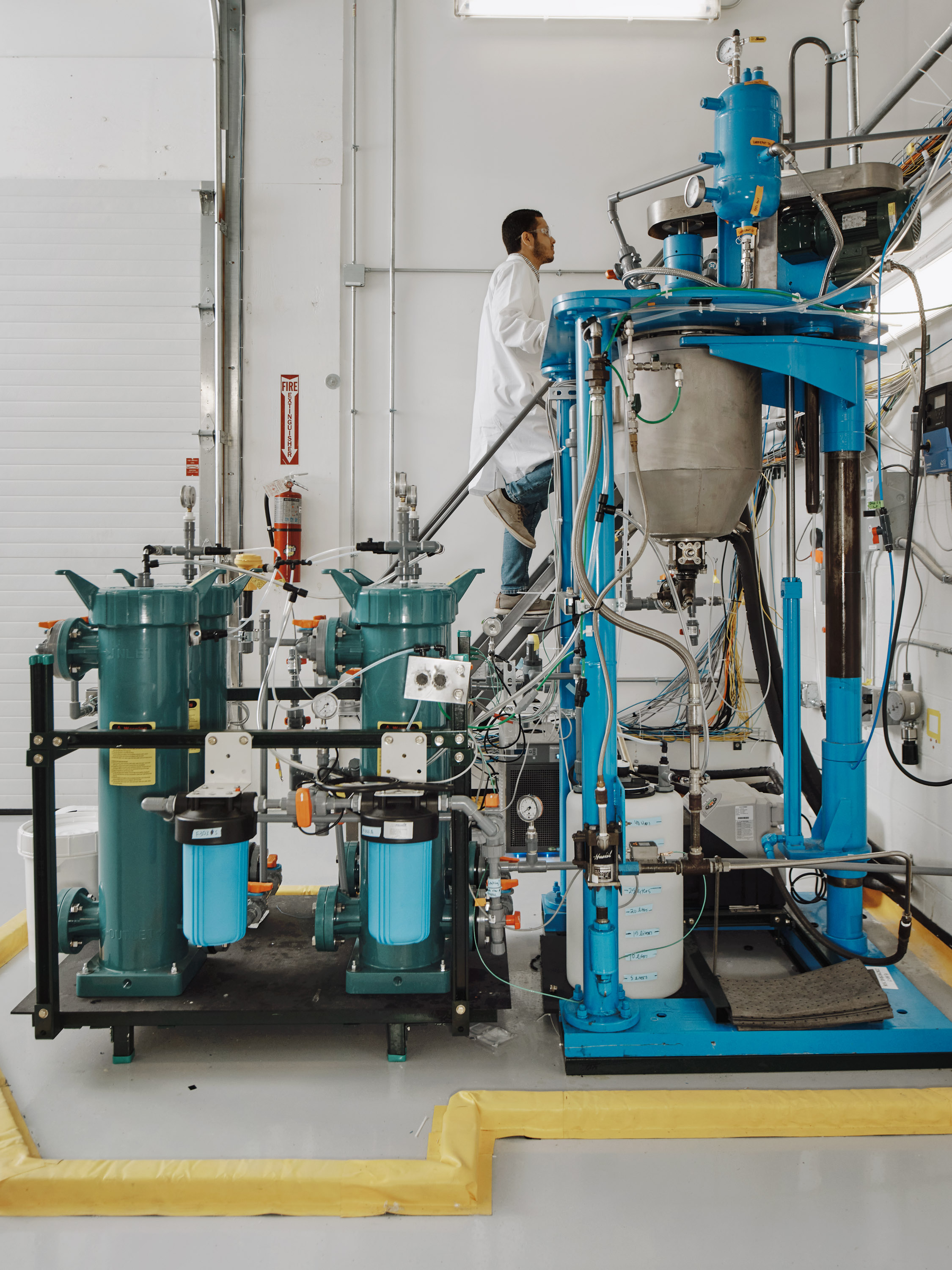2023 Climate Tech Companies to Watch: Sublime Systems and its clean cement
The firm is using electrochemistry to reinvent one of the world’s dirtiest materials.

Explore the 2023 list of 15 Climate Tech Companies to Watch.
Sublime Systems has invented a new way to make cement. The startup’s approach employs electrochemistry to dramatically cut emissions, both by tweaking the chemical reactions involved and by eliminating the need for high temperatures.
Intro
Sublime Systems is reinventing how we make cement—a material that’s a real climate nightmare, accounting for roughly 8% of global greenhouse-gas emissions.
When cement is mixed with water, sand, and gravel, it hardens into concrete—the second-most-used substance on the planet (after water).
In the conventional cement-making process, emissions mostly come from two sources. First, ground-up materials such as limestone and clay are heated in kilns to over 1,400 °C (2,500 °F) to prime the mixture. Reaching those temperatures typically requires burning coal or other fossil fuels, which produces carbon dioxide and other greenhouse gasses.
The chemical process in the kiln also requires peeling carbon dioxide away from the starting minerals to leave the reactive cement powder that builders use. That carbon dioxide is usually difficult to capture before it’s emitted into the atmosphere.
Sublime Systems has invented a process that tackles both of those issues.
First, the company uses electrochemical reactions rather than high temperatures to make its cement, avoiding the need to burn fossil fuels. Fueling the reactions with electricity means that Sublime’s plants can eventually be powered by energy sources like solar and wind instead of by burning coal or natural gas. The process can also use different starting materials that don’t necessarily emit carbon dioxide when they’re transformed into cement ingredients.
Key indicators
- Industry: Cement
- Founded: 2020
- Headquarters: Somerville, MA, USA
- Notable fact: The first reactions that cofounder Leah Ellis ran in a lab at MIT made only about a die-sized amount of material.
Potential for impact
If Sublime is able to run its process at the massive scales required to be relevant in the industry, the startup’s technology would reduce emissions associated with cement by 90%.
And while several paths to decarbonizing the sector are under development today, Sublime’s approach could eventually make cement that can compete with conventional methods on cost, making a convincing economic case for adoption.
Caveats
Some other climate-focused cement startups make material that’s chemically identical to existing cement. But while Sublime’s material acts just like traditional cement when it hardens, it takes a different path to get there.
That could be a problem in a conservative industry like construction, where new building materials and technologies need to clear a high bar before they are adopted. Sublime will have to use different standards to test its material, which could make some builders hesitant to make the switch.
Additionally, scaling electrochemical processes up from the lab can present engineering challenges. Reactions may not work the same way in bigger tanks, and new equipment will be needed when going from hundreds to thousands to millions of tons of capacity. Scaling issues could delay the company’s aggressive timeline. Making material at larger scales is also likely to require hundreds of millions of dollars in capital funding, which the company will need to raise quickly as it builds factories.
When
Sublime has been steadily expanding its operation, from small reactions in an MIT lab to a pilot facility that can produce about 100 tons of cement each year. The company’s next step is to build a larger demonstration facility with the capacity to produce over 10,000 tons of cement each year, which it plans to bring online by 2026.
Finally, a full-scale commercial plant, which would produce a million tons of material each year, should be operational by 2028, the firm says.
Next steps
Over the next five years, Sublime will want to show it is making progress on these demonstration and commercial facilities. The company will need to raise additional funding and could announce new commercial partnerships to make the sites a reality.
In the meantime, the startup plans to complete real-world tests of its materials, including building small installations, like sidewalks or patios, with concrete made from its cement. These demonstrations would prove that Sublime is able to make large amounts of the cement, and that its products will behave as builders might expect—hardening into a resilient, tough material that can scaffold the world around us.
Explore the 2023 list of 15 Climate Tech Companies to Watch.
Deep Dive
Climate change and energy
The problem with plug-in hybrids? Their drivers.
Plug-in hybrids are often sold as a transition to EVs, but new data from Europe shows we’re still underestimating the emissions they produce.
Harvard has halted its long-planned atmospheric geoengineering experiment
The decision follows years of controversy and the departure of one of the program’s key researchers.
How thermal batteries are heating up energy storage
The systems, which can store clean energy as heat, were chosen by readers as the 11th Breakthrough Technology of 2024.
These artificial snowdrifts protect seal pups from climate change
The human-built habitats shield the pups from predators and the freezing cold, but they’re threatened by global temperature rise.
Stay connected
Get the latest updates from
MIT Technology Review
Discover special offers, top stories, upcoming events, and more.